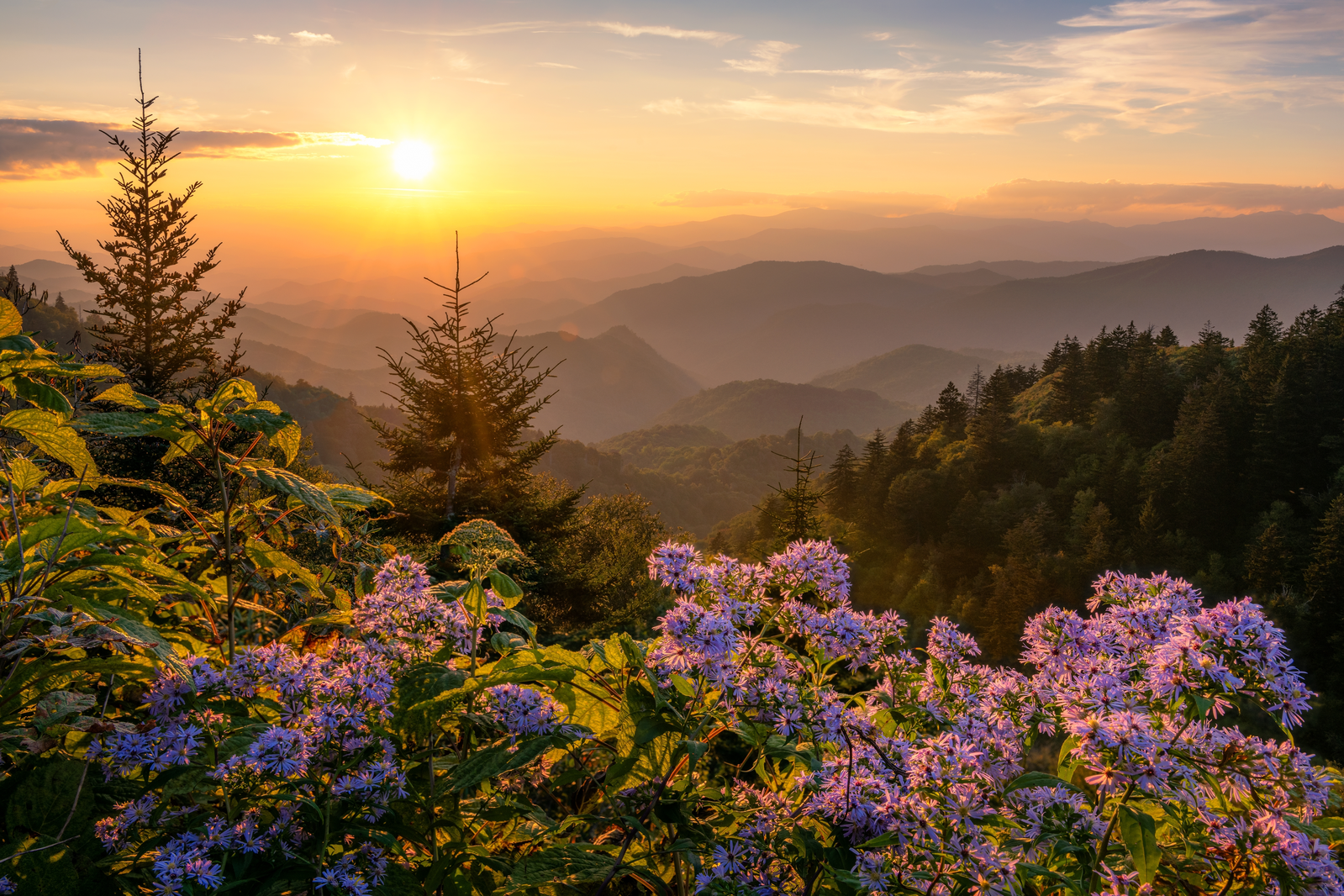The Great Smoky Mountains National Park has a diverse collection of log cabins and other log buildings. But how much do you know about these old historical structures? Keep reading to learn all about the cabins and what makes them more unique than any other cabin you’ve visited.
(See Related: Beautiful Historic Areas and Old Smoky Mountain Buildings)
History of Log Cabins in the Smoky Mountains
According to the National Park Service website, there are over 90 historic structures, including houses, barns, outbuildings, churches, schools and grist mills that have been rehabilitated in the park. There are many distinct features that separate the log cabins in the Great Smoky Mountains National Park from other cabins in the area.

The cabins that make up the Great Smoky Mountains history are very small. The living quarters were extremely tiny compared to today’s cabins. To make it even harder, the families who would stay in these cabins were very large.
2. Windows
There were not always a lot of windows at the cabins. Some cabins did have more than others. There were some windows known as ‘granny holes,’ which were tiny square windows near the chimney, where the grandmother would sit in the extra bit of sunlight to sew and knit.
3.Cabin Style
There were typically 3 styles of log cabins in the Smoky Mountains:
- Single pen: A single unit home
- Dog-trot: 2 units separated by an open walkway for people and dogs
- Saddlebag: 2 units with a chimney in the center

Where to See Historic Structures in the Great Smoky Mountains National Park
Just about everywhere you visit in the national park, you can find historic buildings, cabins and other structures. These structures have been preserved since the creation of the Great Smoky Mountains National Park in 1934. These are some of the most popular places to visit for a historic experience:
Cades Cove
Obviously, Cades Cove is an extremely popular place to spend time, learning the Great Smoky Mountains history. For over 100 years, Cades Cove was a farming community with about 125 families. These families built the area, harvested crops and cared for the land. Once the national park was being created, these families were forced to move their life from the Cove to another area, outside of the national park. Some were able to stay, but they were not able to live the farming lifestyle as they had before since the land now belonged to the national park.
There are dozens of historical structures in Cades Cove in the Great Smoky Mountains National Park. These are some of the places you may recognize:
- John Oliver Place
- Primitive Baptist Church
- methodist Church
- Missionary Baptist Church
- Elijah Oliver Place
- Henry Whitehead Place
- Dan Lawson Place
- Tipton Place
- Carter Shields Cabin

Things to See at the Mill Area at Cades Cove:
- Blacksmith Shop
- LeQuire Cantilever Barn
- Millrace and Dam
- Cable Mill
- Smokehouse
- Gregg-Cable House
- Corn Crib
- Sorghum Mill
Roaring Fork Motor Nature Trail
The Roaring Fork Motor Nature Trail is most well known for its natural beauty, but there’s also some historical significance in the area.
The Roaring Fork community was created when families were looking for a place to settle, over 150 years ago. Just like the people of Cades Cove, when the national park was created, the people living in Roaring Fork had to leave. There were a few given permission to stay, due to illness and old age. It was a difficult change for many because the land belonged to national park, meaning that the people were not allowed to farm the land, hunt or fish.
You may recognize the names of these farmer’s homes at Roaring Fork:
- Noah “Bud” Ogle Cabin
- The Home of Ephraim Bales
- Alfred Reagan Place

Bonus of Visiting Roaring Fork:
When you travel along the Roaring Fork Motor Nature Trail, you can take a short hike to see the Grotto Falls waterfall.
The log cabins in the Smoky Mountains are some of the most interesting and unique buildings throughout the entire area. The history that is preserved in these cabins is unparalleled. When you visit the cabins, you can truly embrace the Smoky Mountain lifestyle and culture.
For more information about the great places to visit in the Smokies, take a look at these 5 Places to Go in the Smoky Mountains that Will Make You Want to Visit Immediately.

















